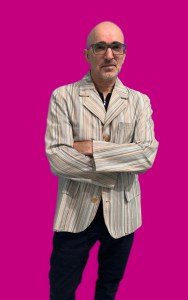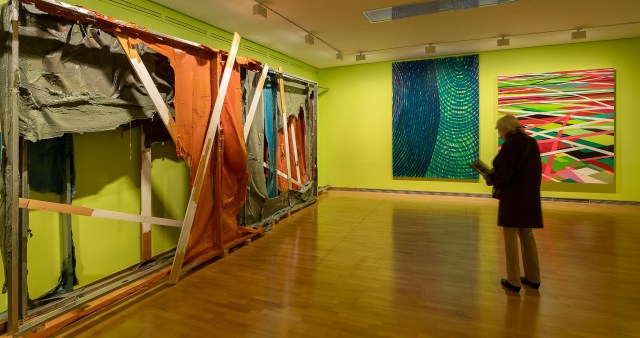 Paco Barragán (Oviedo, Spain) is a curator and culture theorist that believes that the so-called “white cube” is dead. Since 2016 he doesn’t do “white cubes.” Between 2015 and 2017 he oversaw the visual arts section of Matucana 100 in Santiago de Chile. As a curator he is interested both in the history of museology and exhibition design and the history of the making of the art market. Why? Because you can´t have a good command of curatorial practices without a profound knowledge of the art market, which had a profound impact on museological and curatorial practices. Most of the known museological displays, from the Period Room to the Impressionist or Expressionist hang respond after all to profound commercial goals. For this reason, Barragán wrote a book about the history of art fairs and biennials since ancient Greece and Rome until today as he understands that we need a longue durée perspective. At this very moment he’s finishing a book about the history of collecting since Assyria until today. Museums are the result of all kinds of collecting, so it has sense to dive into that. Barragán thinks that a curator must be a narrator, a museologist, and an exhibition designer. Today curators are only narrators, the so-called Harald Szeemann model, but we need to go back to the practices of Wilhelm Bode, Ludwig Justi, Alexander Dorner and Alfred H. Barr, Jr. to do our job properly. In other words: to be a Gesammtkurator. That is also the reason why we only see “white cubes”, from Tate to MoMA to Mori Museum, because curators these are only narrators and have no love for the past. But the future of curating lies in creating “contextual museologies”, id est, better and more attractive presentations.
Paco Barragán (Oviedo, Spain) is a curator and culture theorist that believes that the so-called “white cube” is dead. Since 2016 he doesn’t do “white cubes.” Between 2015 and 2017 he oversaw the visual arts section of Matucana 100 in Santiago de Chile. As a curator he is interested both in the history of museology and exhibition design and the history of the making of the art market. Why? Because you can´t have a good command of curatorial practices without a profound knowledge of the art market, which had a profound impact on museological and curatorial practices. Most of the known museological displays, from the Period Room to the Impressionist or Expressionist hang respond after all to profound commercial goals. For this reason, Barragán wrote a book about the history of art fairs and biennials since ancient Greece and Rome until today as he understands that we need a longue durée perspective. At this very moment he’s finishing a book about the history of collecting since Assyria until today. Museums are the result of all kinds of collecting, so it has sense to dive into that. Barragán thinks that a curator must be a narrator, a museologist, and an exhibition designer. Today curators are only narrators, the so-called Harald Szeemann model, but we need to go back to the practices of Wilhelm Bode, Ludwig Justi, Alexander Dorner and Alfred H. Barr, Jr. to do our job properly. In other words: to be a Gesammtkurator. That is also the reason why we only see “white cubes”, from Tate to MoMA to Mori Museum, because curators these are only narrators and have no love for the past. But the future of curating lies in creating “contextual museologies”, id est, better and more attractive presentations.



